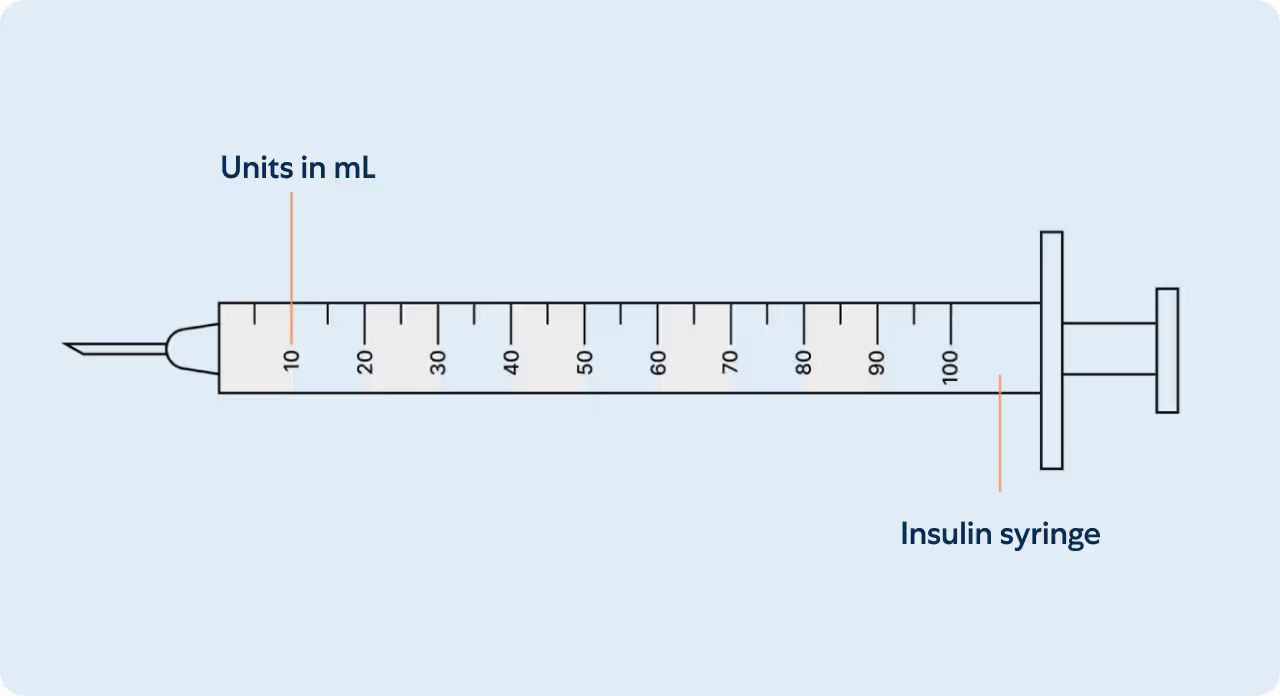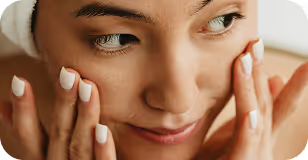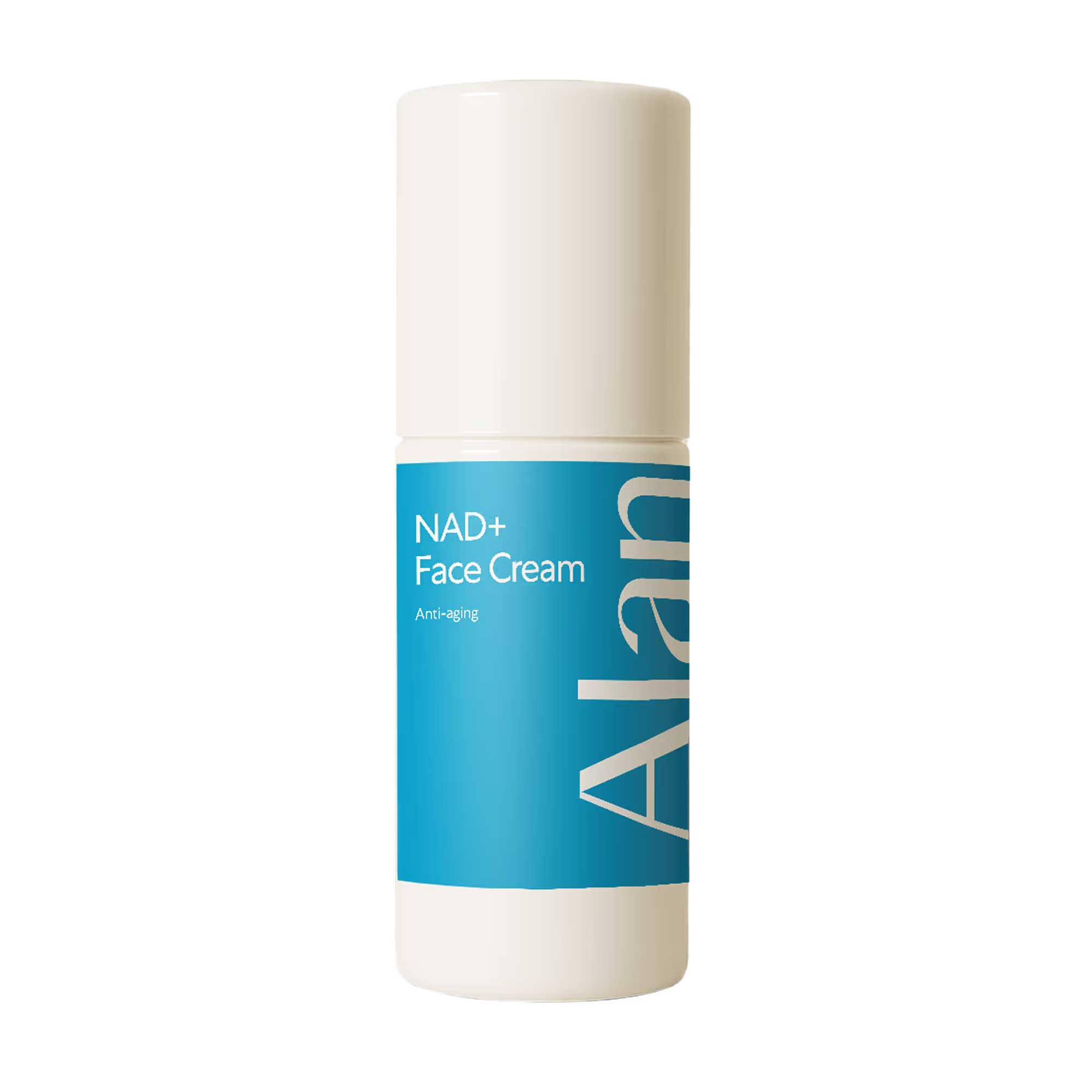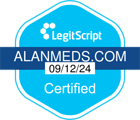Storage
Store in the fridge when not in use, and avoid heat, moisture exposure, or direct sunlight to protect its potency.
Instructions
This information is intended for individuals who have been prescribed NAD+ Face Cream by their Alan Health provider.
This high-potency cream delivers active NAD+ (not niacinamide) directly to your skin. NAD+ is a coenzyme that supports cellular repair, collagen production, and skin regeneration—making it a powerful addition to your nightly routine. Follow the steps below before your first use:
How to Use NAD+ Face Cream (10%)
Apply nightly for best results:
- Use a pea-sized amount on clean, damp skin.
- Gently smooth over your face before bed.
- Let the cream fully absorb before layering any other skincare or makeup.
- If using prescription topicals, apply NAD+ last—unless directed otherwise by your doctor.
Understanding your insulin syringe

Measuring your dose
Insulin syringes are used for subcutaneous injections. They are marked in Units on the insulin syringe barrel (see illustration). Insulin syringes facilitate the precise measurement of tiny amounts of liquids which are ideal for medications such as insulin that require small and accurate dosing. Unit marks are also expressed in mL’s and can be interchangeably referenced. A prescriber may write a prescription in Units or in mL’s.
Within the amount of liquid is the prescribed mg dosage of your medication (see mg chart). Milligrams (mg) is not an amount of liquid, but rather the amount of drug that is within. The conversion between units and milligrams varies depending on the concentration of the product being used.
What can I expect?
{{what-to-expect-nad-face-cream}}
Safety information
The most common side effects of NAD+ face cream include tingling or redness (especially for new users), mild irritation or dryness in sensitive skin areas, and a temporary increase in skin sensitivity.
To reduce the risk of irritation, test a small amount on your neck or hand before the first full application.
A full list of side effects can be found here.
Do not use this product if you are currently pregnant, breastfeeding, or plan to become pregnant or breastfeed without consulting a qualified healthcare provider.
Do not use this product if you are allergic to any ingredient in the formulation. Avoid contact with eyes and do not apply to broken or irritated skin.
Note: The above statements have not been evaluated by the Food and Drug Administration. This product is not intended to diagnose, treat, cure, or prevent any disease.
Frequently Asked Questions
What is NAD+ Face Cream?
As we age, NAD+ levels in the skin decline—slowing cellular repair and contributing to dullness and fine lines. This high-potency 10% NAD+ cream helps replenish those levels, supporting renewal, energy production, and a visibly healthier complexion.
How do I use NAD+ Face Cream, and how often?
Apply a pea-sized amount to clean, dry skin once daily—ideally in the evening. Allow it to fully absorb before layering other products. Use consistently for at least 8 weeks for best results.
When will I see results?
Many users notice a subtle glow within 30–60 minutes of application. Improvements in texture, tone, and fine lines typically appear within 4–8 weeks of consistent use.
Can I wear makeup over the cream?
Yes. Once the cream has fully absorbed, it creates a smooth base for makeup—and many users find their makeup applies more evenly.
What are the potential side effects?
Mild tingling or redness may occur when first using the cream—this is generally temporary. If you have sensitive skin, we recommend testing a small amount before full application. Discontinue use and consult a provider if irritation persists.
Who should avoid using NAD+ Face Cream?
It’s not recommended during pregnancy, breastfeeding, or for those with certain skin conditions unless approved by a healthcare provider.
Can NAD+ interact with other skincare products?
Yes, it can generally be used alongside most skincare products. However, when layering with strong actives like retinoids, AHAs, or vitamin C, you may need to adjust timing or frequency to avoid irritation. For personalized guidance, consult your Alan Health provider.
Is refrigeration required for NAD+ Face Cream?
Yes. Store in the refrigerator with the cap tightly closed. Avoid heat and direct sunlight to preserve potency.
Additional support
For details about your medication and dosing, please log in to your patient portal. Your physician is here to help with any medical questions. If you are experiencing a medical emergency, call 911 right away.













